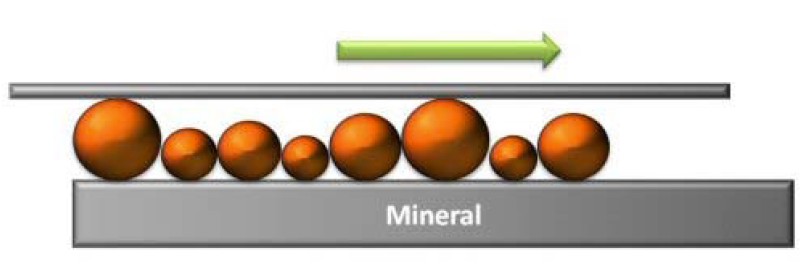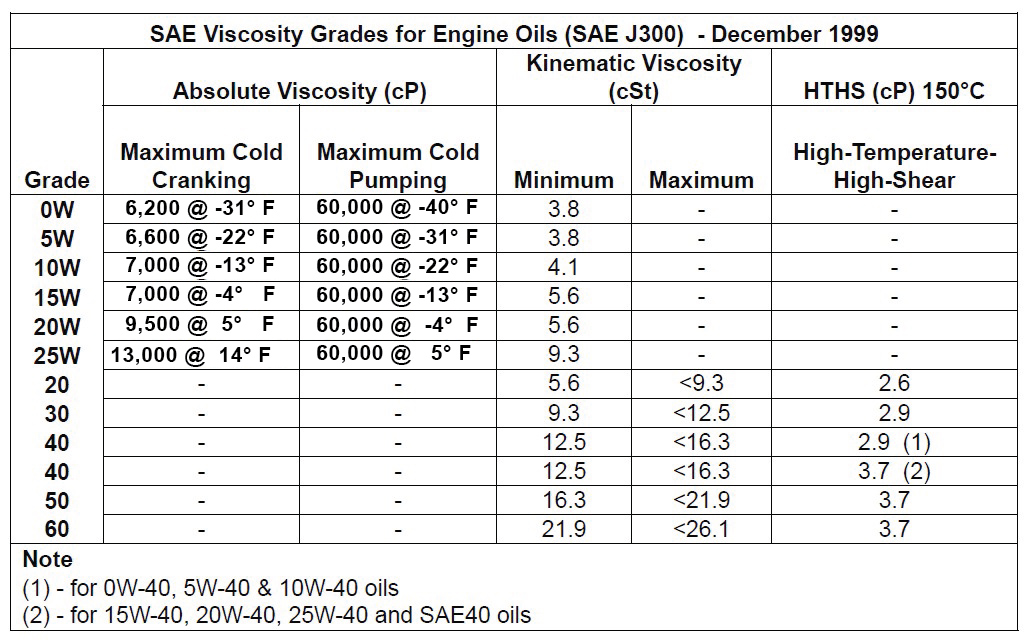Synthetic engine oil versus convention engine oil
What are the differences between synthetic engine oil and conventional engine oil
Should you switch to synthetic oil?
People always ask me if they should switch to synthetic engine oil. It starts with pressure from the guys at the quick oil change places. You go in for an oil change and the next thing you know, they’re telling you to spend more on synthetic oil. The discounts on oil changes don’t apply to a synthetic oil change, so you always have to pay more for this type of oil. By the time you finish this article, you’ll have a much better understanding of why synthetic oil is and why it might be better for your vehicle.
This discussion is a bit long, but I’m devoting a lot to it because there are so many myths and legends out there. I’ll cover this topic from A-Z so you can make an informed decision.
What is engine oil?
All engine oil is built with a base oil (about 80% of the volume) plus additives. So let’s start with a discussion of base oil.
Base oils are categorized in six groups. Groups 1-3 are considered traditional mineral oils 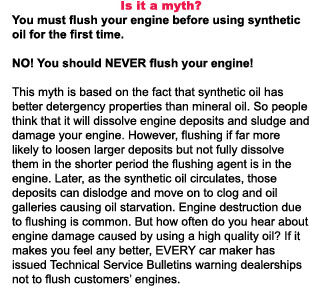 derived from crude oil. The refining process removes most of the wax and nitrogen. Then the refining process separates out the remaining unsaturated hydrocarbons and converts them into more stable saturated molecules.
derived from crude oil. The refining process removes most of the wax and nitrogen. Then the refining process separates out the remaining unsaturated hydrocarbons and converts them into more stable saturated molecules.
Group 1 is the lowest quality oil and is converted from crude using a solvent extraction process. Group 2 and Group 2+ are considered higher quality and use “hydro-processed” and “Hydro-cracking,” methods respectively.
Group 3 oil is the highest level you can attain using traditional petroleum crude as the base material. It’s refined using a “Severe Hydro-cracking” or “Hydroisomerization” method.
Since it is such a high quality mineral oil, some oil manufacturers blend in a bit of Group 4 base and high quality additives and are allowed to call it synthetic. Group 4 oils are made by chemical reaction from Polyalphaolefin (PAO) sometimes derived from natural gas, depending on the market price for natural gas.
Most high quality synthetic oils are made with Group 4 base stocks. Group 5 oils are made from synthetic esters, including diesters, polyolesters, alklylated napthlenes, alkylated benzenes, etc.).
Next, the base oils are combined with the oil manufacturers’ unique blend of additives. They include:
Engine oil additives
Detergent additives clean deposits formed by decomposed oil and combustion contaminants
Dispersant additives keep the contaminants in suspension and prevent them from settling out until they can be filtered out by the oil filter. Dispersants also help prevent sludge formation.
Rust and corrosion inhibitors protect the engine from water and acids formed by the combustion process
Antioxidants inhibit the oxidation process. As engine oil oxidizes, it thickens and forms sludge.
Anti-wear additives form a film on metal surfaces to help prevent metal-to-metal contact
Viscosity modifiers (VM) are a polymeric additive with molecules that are smaller and wound tighter when cold, but unwind and expand like a clock spring when hot. In effect the VM molecules thicken the oil.
Pour point depressants (PPD)– All mineral oil contains some wax to improve lubricity. But the wax molecules can inhibit flow when cold. So pour point depressants help the oil flow better when cold.
Engine oil viscosity
Viscosity is an oil’s resistance to flow. Cold oil has more resistance to flow. Manufacturers can make traditional mineral oil flow easier by adding a pour-point depressant to prevent wax particles from coalescing together and restricting flow when cold.
True synthetic engine oil (made with Group 4 base oil) doesn’t have wax. When cold, the uniform molecule size makes the 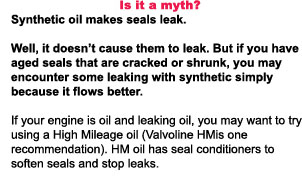 oil flow better when cold. So it has a naturally low pour point. In fact, they have excellent pour points all the way down to -50°F.
oil flow better when cold. So it has a naturally low pour point. In fact, they have excellent pour points all the way down to -50°F.
Oil viscosity can be measured several ways. One common method is to fill a small container with a precise amount and let it flow through a specific opening and time how long it takes to empty the container. This is called Kinematic Viscosity and is measured in centistokes (cSt). One cSt is defined as a fluid that moves at 1-mm2/second. At 68°F, water measures 1 cSt, 20-weight engine oil is 4.3 cSt, and sour cream is 19,000 cSt.
But engine oil is pumped through small channels, not gravity fed through an opening. As oil flows through a narrow channel it incurs internal friction as the molecules are forced closer together and ride against the walls of the channel. So a different viscosity measure must used that considers how the engine oil flows through a narrow opening.This testing method is called Dynamic or Absolute Viscosity and is measured in centiPoise (cP).
High Temperature High Shear (HTHS) is a rating of an oil’s resistance to flow between fast moving parts in a fully warmed engine. You’ll find this condition between rotating parts and their bearings, like crankshaft and camshafts, and camshaft and hydraulic lifters. An oil’s HTHS rating has a direct impact on fuel consumption, valve-train wear, and bearing protection.
Here’s a chart to illustrate. It shows Dynamic/Absolute Viscosity in the first column, followed by Kinematic Viscosity (gravity flow) in the second and HTHS in the third column.
Cold cranking represents how oil behaves in a crankshaft bearing on a cold winter’s morning. It doesn’t take much brain power to realize that a high viscosity oil will slow down cranking speed and make it even harder to start a cold engine. So these figures represent the lowest temperature at which an engine can start with each viscosity oil. Maximum cold pumping, on the other hand, shows the maximum viscosity at which an engine oil pump can actually pump oil at a given temperature.
If the pump can’t pump the oil, you won’t have sufficient lubrication during a cold start. Worse yet, all engines run at a faster idle speed at cold startup, so you experience a double-whammy where you not only don’t have lubrication, but you’re running parts at a faster speed. Talk about cold start wear! All SAE tests are conducted in Centigrade, but I’ve converted those to F so they’re easier for us Americans to understand.
What about multi-viscosity engine oil?
Traditional mineral multi-viscosity 10W-30 oil is made from 10-weight base oil. The manufacturer adds enough Viscosity Modifiers (VM) to make the 10-weight oil behave like a 30-weight oil when hot. The polymeric additives literally uncoil and thicken the oil to flow like 30-weight. There are other ways to build a multi-viscosity oil, but I’m keep this as simple as possible.
Multi-viscosity 10W-30 synthetic oil, on the other hand can be made from 20-weight oil that flows like 10-weight oil when cold. The manufacturer adds far less VM to make it thicken up to 30-weight when hot. Each oil manufacturer has their own recipe to achieve multi-viscosity performance. This is just one example.
No matter which brand you choose, keep in mind that VM additives break down under shear and heat loads. So hauling a heavy load will breakdown your oil faster than dropping off the kids at school.
Viscosity Index is another factor you should consider. Think of VI as the range the oil covers. In the ‘70’s car makers recommended 10W-40 oil as the one-size-fits-all oil. It was a mineral oil built on 10-weight with enough VM added to build viscosity up o 40-weight. But that’s a LOT of polymeric additive. As the additive molecules sheared, they degraded and formed deposits on the piston rings causing them to stick in the lands. You’ll notice that most new car makers now recommend a much tighter VI, like 0W-20, or 5W-20.
Does synthetic oil last longer? Can I extend my oil change intervals?
Only Amsoil is willing to go out on a limb and give you specific extended oil change intervals. The other oil companies tell you to follow the car makers oil change intervals AS LONG AS YOU’RE COVERED BY A WARRANTY. Get it? If you extend oil changes and experience an engine oil-related engine failure, the car maker or the extended warranty company will deny your claim. Once you’re out of warranty, it’s a different story.
But it’s not much of a different story. Because if you read the fine print in the oil company’s warranty, you’ll see how they cover their rear-end. Even Amsoil cover’s their butt. Their warranty says their oil will go 25,000 miles in normal use and 15,000 miles in severe use. However, if you read on, you’ll see that to even qualify for severe use, you must drive the vehicle longer than 10 miles at a time. In other words, they’re telling you that short trips disqualify you from using the 15,00o mile engine oil change interval–which only makes sense since short trips are REALLY hard on oil.
Engine oil change intervals are dependent on HOW YOU DRIVE.
Synthetic oil is a better lubricant than mineral oil, 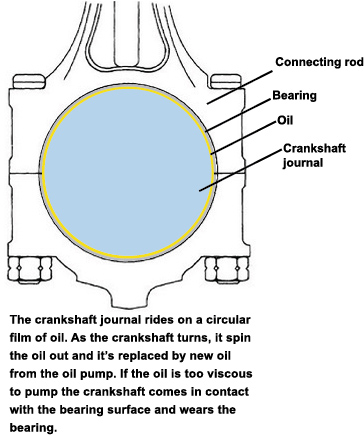 but it’s not a magic potion. It still has to lubricate, carry heat away from metal parts, clean your engine, and prevent sludge and corrosion. And the life of synthetic oil and its additives depends STRICTLY on how you drive. If anyone gives you a flat mileage figure without any caveats, they’re selling snake oil, not engine oil.
but it’s not a magic potion. It still has to lubricate, carry heat away from metal parts, clean your engine, and prevent sludge and corrosion. And the life of synthetic oil and its additives depends STRICTLY on how you drive. If anyone gives you a flat mileage figure without any caveats, they’re selling snake oil, not engine oil.
If you make lots of cold-start short trips in stop and go traffic, you’ll get more fuel dilution in the oil due to rich mixtures at startup and you won’t run the engine long enough to burn it off. That’ll increase the load on the acid neutralizer additives. And, it increases the water content in the oil which contributes to sludge formation.
Or, if you leave your car outside in the winter, start it up and drive away, you’ll use up the anti-wear additives faster. If your engine has high miles, you’ll have more blowby gasses in the crankcase and that’ll cause the engine oil dispersants and detergents to deplete faster. Older cars also degrade oil faster due to larger clearances. So you tell me, can anybody give you a pat answer on how long the oil will last? Nope.
Don’t believe me? Read the fine print in the oil company’s warranty. Even if the oil company provides a 300,000 mile warranty, it’ll still have exclusions. One major oil company that provides a 300,000 mile warranty requires you to change your oil according to the car makers schedule – EVEN IF YOU’RE USING the company’s synthetic oil product.
Other engine oil companies encourage users to conduct oil testing to determine when it’s time to change oil. I’m not a big fan of that method. First, when you add up the costs of the tests, you’ll spend more than just doing an oil change on an earlier schedule. Second, not all labs use the same testing methods or test for the same properties. Most labs do test for the presence of anti-wear additives and metal molecules that would indicate wear. But what about the other additives?
Read the latest Toyota bulletin on when to change your oil
Can you depend on the oil life monitoring system?
That depends on which method the car maker employs. Some oil change lights go off at specific mileage intervals.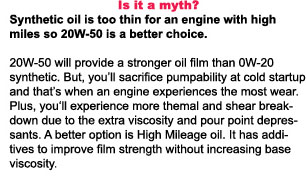 As you can see from above, that’s not a very reliable way to predict oil condition because it doesn’t take your actual driving habits into account. But, it’s better than no reminder at all.
As you can see from above, that’s not a very reliable way to predict oil condition because it doesn’t take your actual driving habits into account. But, it’s better than no reminder at all.
Newer vehicles use a far more sophisticated method. GM, for example, specifies a certain oil, DEXOS for their engines. Oil makers that license the DEXOS name must comply with GM’s formula. That means GM knows how much of each additive is in the oil. The oil life monitor computer tracks the number of times you start the engine and what the engine temperature is. It also tracks the loads you place on the engine and the RPMS. Knowing all that, the GM Oil Life Monitor can predict oil life based on your particular driving conditions.
Want to learn more? Here’s a link to a very popular oil site. I don’t always agrees with Bob’s “facts”, but he’s got a lot of good information. Click here to go to Bob Is The Oil Guy
Don’t know which oil is recommended for your vehicle? Just engine your vehicle information at Valvoline’s site and it’ll tell you the car makers recommendation. Click here to go to the Valvoline site.
Got a new GM vehicle? Then you must use DEXOS oil. Click here to read more about DEXOS.
Whether you change your own oil or have the shop do it, you need to know the difference between an economy oil filter and a premium unit. Click here to get oil filter smarts.
Heard from all your buddies that FRAM is a bad filter? That’s B.S. Click here to read about those so-called filter studies that bash FRAM.
Heard about Mobil 1? Did you know they make several different versions of Mobil 1? Click here to read about what makes each different.
© 2012 Rick Muscoplat
Posted on by Rick Muscoplat

